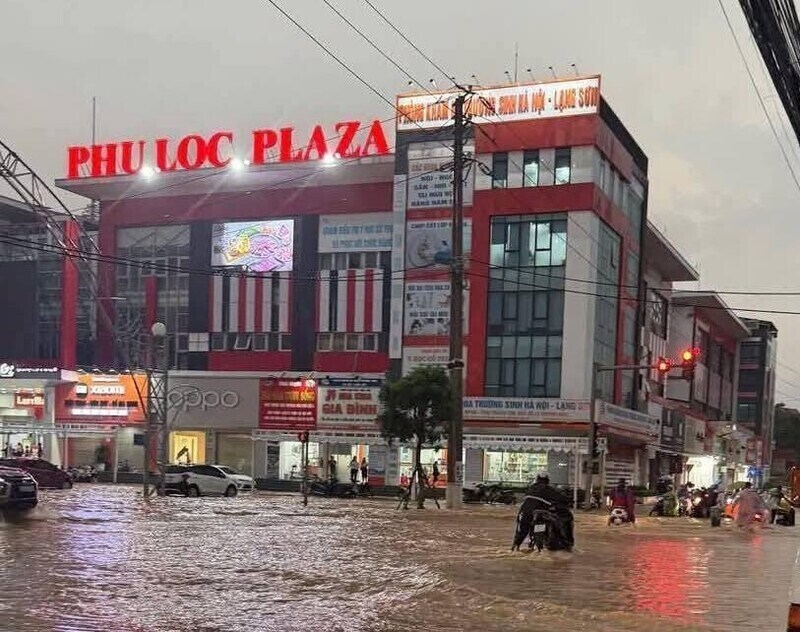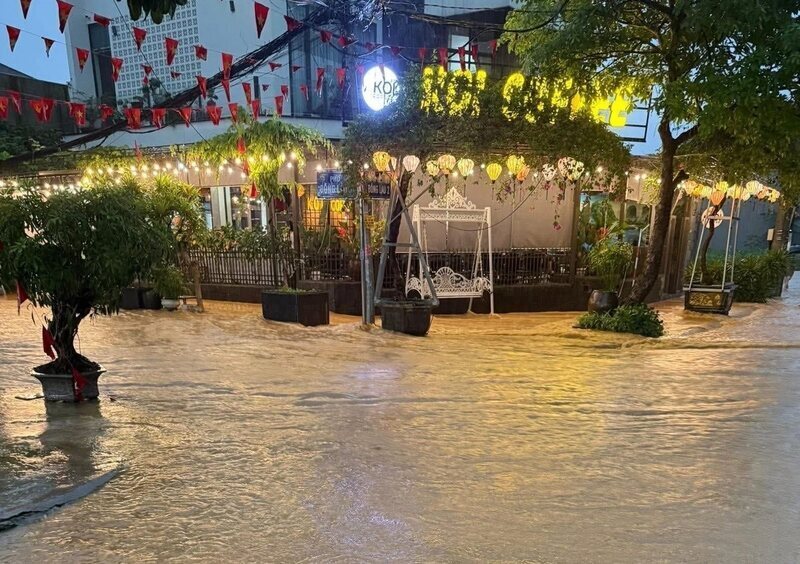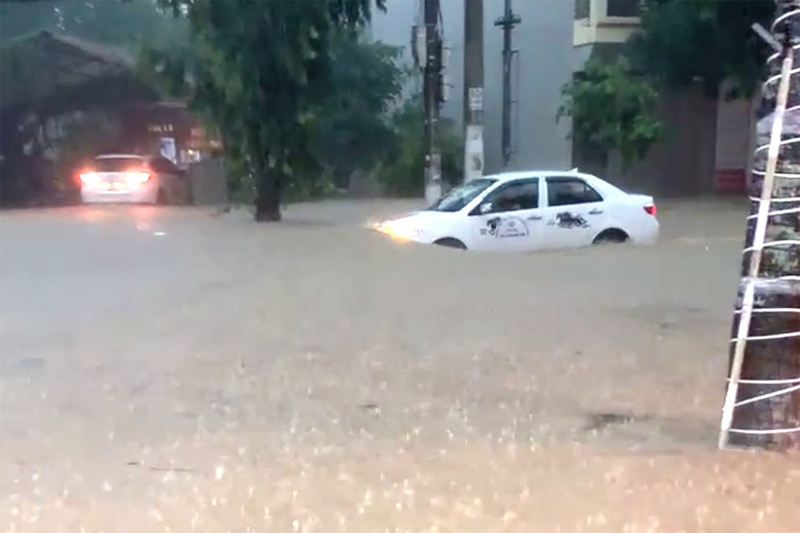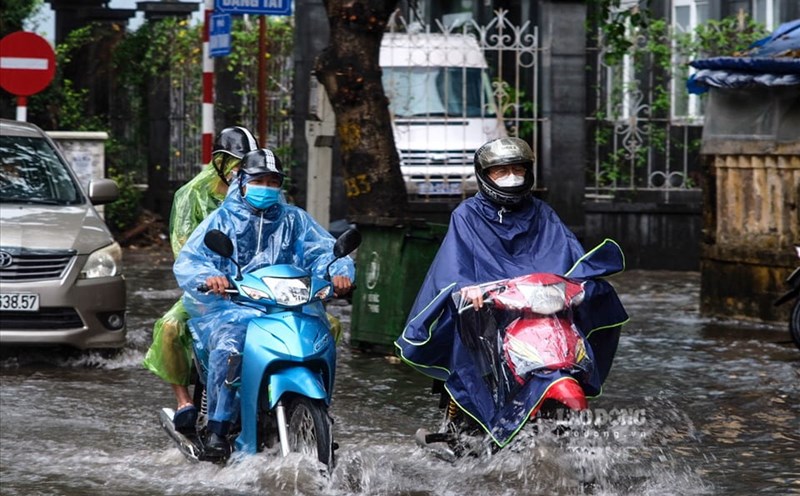In recent days, after just a few hours of heavy rain, many roads in Lang Son city such as Ba Trieu, Le Loi, Tran Dang Ninh, Gieng Vuong market area... have quickly turned into rivers, with water flooding 30-50 cm deep, nearly 1 meter in some places.
People had to wade through water to pull their vehicles away; vehicles stalled and lying around. Many businesses on both sides of the road rushed to use sandbags and board to prevent water from overflowing, avoiding damage to goods.
Ms. Hoang Nhu (Chua Tien Street, Lang Son) said: "I don't know how many times I took a bus to pick up my child when it rained heavily. After just a few hundred meters, the water from the alley overflowed onto the main road, dragging my car around, almost falling and falling".

Ms. Trang Lanh (Tran Dang Ninh Street) was upset: "The house was flooded with water, sitting in the house was afraid that the ceiling would collapse because the water had seeped in. The shop had leaked and wrapped all of its goods. People fell and had to lie still in one place. Every time it rains heavily, it's a misfortune like this."
Ms. Hoang Thi Lan, a trader at Gieng Vuong market, lamented: "Every year it is flooded. With a little heavy rain, we had to clean up, our furniture was broken, and our business was sluggish.
According to people's feedback, the main reason is that the drainage system has not been invested in synchronously. The dredging, maintenance, and management of urban drainage systems are still limited. In particular, the clearance of underpass gates, garbage collection gates, and stagnant mud has not been regularly handled.
In some urban areas, many locations of train holes and wastewater collection holes were stolen, such as in the Mai Pha resettlement area. Garbage filled the sewers, but the authorities have not yet taken drastic measures to completely overcome the situation.
Mr. Duong Cong Vi, Director of the Department of Construction of Lang Son province, said that flooding not only occurs in Lang Son city but also occurs in neighboring urban areas such as Thai Nguyen and Bac Giang.
According to Mr. Vi, one of the objective reasons is that the total measured rainfall in the past time was up to 443 mm, of which the highest rainfall in a day reached 100 mm.

There are currently 4 flooded areas in the old Lang Son City. The Mai Pha area has been treated to drain water directly into the Ky Cung River, in order to limit flooding. The Ngo Quyen overpass area is receiving all water from Dau and Keo Tao Mountains.
In particular, Phu Loc 1, 2, 3, 4 urban areas are facing the full flow of water from Hop Thanh, the Provincial General Hospital and the old Cao Loc town, all flowing through National Highway 1. Meanwhile, Nam Hoang Dong urban area still does not have its own drainage system, causing all the rainwater to flow into Phu Loc area.
Currently, Phu Loc urban area and Ngo Quyen overpass area are like water bags in the city area, Mr. Vi said, adding that the inner-city drainage system has been built a long time ago and is now degraded, significantly affecting the ability to drain water.

Regarding the solution, the Director of the Department of Construction of Lang Son province said that wards need to step up propaganda and raise people's awareness in not littering, avoiding congestion of drainage systems. In addition, management units need to increase periodic dredging of manholes and ditches to improve drainage capacity.
The fundamental solution is that this year, we will coordinate with functional wards and branches, prioritizing budget allocation to handle 5 locally flooded areas. At the same time, review and replace old sewers, build a sewer system along National Highway 1 to bring rainwater from urban areas and residential areas to a common drainage system, preventing large amounts of water from the East from flowing into the city, Mr. Vi shared.











